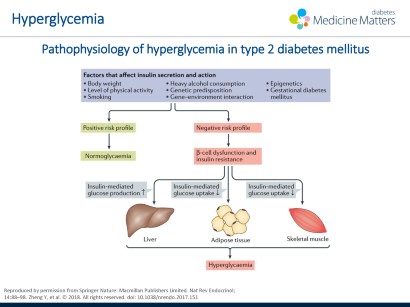Type 2 Diabetes Mellitus Pathophysiology

This ailment is a disease state which involves the dysfunction of insulin producing pancreatic beta cells insulin hormone resistance in cells of the body or a combination of both.
Type 2 diabetes mellitus pathophysiology. Pathology of type 2 diabetes in type 2 diabetes the body either produces inadequate amounts of insulin to meet the demands of the body or insulin resistance has developed. In addition to type 2 diabetes the metabolic syndrome is associated with an increased risk of cardiovascular disease the main complication of type 2 diabetes see chapter 13 6 1. The causes of type 2 diabetes are multi factorial and include both genetic and environmental elements that affect beta cell function and tissue muscle liver adipose tissue and pancreas insulin sensitivity. The pathophysiology of type 2 diabetes mellitus is characterized by peripheral insulin resistance impaired regulation of hepatic glucose production and declining β cell function eventually leading toβ cell failure.
Type 2 diabetes mellitus consists of an array of dysfunctions characterized by hyperglycemia and resulting from the combination of resistance to insulin action inadequate insulin secretion and. Type 2 diabetes type 2 diabetes is the most common form of diabetes. Regarding the definition of diabetes mellitus it is often described as a fasting blood glucose level of 126 milligrams per deciliter mg dl or more. Diabetes mellitus type 2.
The development of type 2 diabetes overt hyperglycaemia also requires the presence of a relative defect in insulin secretion. As per statistics type 2 diabetes is the most commonly occurring type in comparison to the other two forms of diabetes mellitus.

